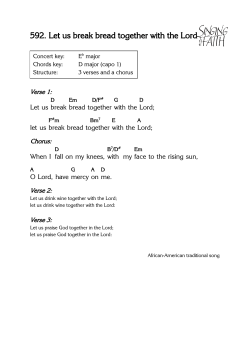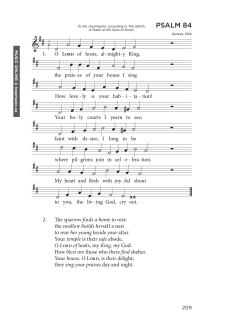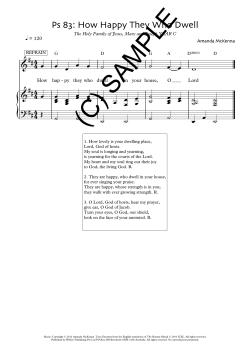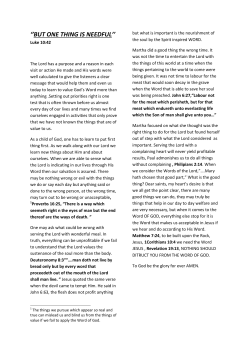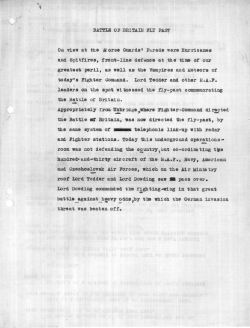
॥ पशà¥à¤ªà¤¿à¤¤ पîªà¤¾î½ î¨à¤µà¤ ॥
॥ पशपु ित पा वः ॥ .. pashupati panchAsya stavaH .. sanskritdocuments.org April 10, 2015 Document Information Text title : pashupati pnchAsya stavaH File name : pashupati5.itx Category : panchaka Location : doc_shiva Language : Sanskrit Subject : philosophy/hinduism/religion Transliterated by : N.Balasubramanian bbalu at satyam.net.in Proofread by : N.Balasubramanian bbalu at satyam.net.in Description-comments : in praise of Lord Pashupati with five faces. Latest update : June 21, 2012 Send corrections to : Sanskrit@cheerful.com Site access : http://sanskritdocuments.org ॥ पशपु ित पा वः ॥ ॥ पशपु ित पा वः ॥ ु सदा सोजातितमधरसाादपरया ु ु ।् भवाा ातॅमरतितिभितप टम अपां पःु काां िौतमिधकशीतं पशपु ते् १॥ ु ं सोजातं मम िरतजातं पनयेत ॥ मख ु वात ैरवमितं ु ािँशिशरमख जटाःध ु गतं वामां ामननयसहॐ ैः ूशिमतमु ।् िकरों वामं नयनमगजानऽे घिटतं दधामं वं हरत ु मम कामं, पशपु तेः ॥ २॥ गले घोरालं गरलमिप गडूषसशं िनदाघाे, गजनवदितनीलं वहित यत ।् िनर ं ु िवाघूचयमिधितमिदशं घोरं तं लघयत ु मदं मे, पशपु तेः ॥ ३॥ ु न ं पूित ूणतिशरसां दातमु िनशं पमथा जलाभावो माभूिदित िशरिस गां वहित यत ।् ु ु टशिशभासा िकरित तत ् सरेु शासाू ित मक ु ं तत प् ं ु पं हरत ु मम मोहं, पशपु तेः ॥ ४॥ मख रमेशो वागीशो िदवसरजनीशौ परशु क ् े ो िनिशचरकुलेशोऽथ धनदः । सरेु शो दैश याशोु ात ैिँशवचिरतवः पिरणताः तदैशानं वं हरत ु भवपाशं, पशपु तेः ॥ ५॥ COMMENTS:Tha above verses are in praise of Lord Shiva, renowned by the name Pashupati in the temple in Nepal.(प) pancha means five, (आम)् Asyam means the face, and(वम)् stavam means a hymn in praise. So 1 ॥ पशपु ित पा वः ॥ 2 the title says that this is in praise of Lord Pashupati with five faces. NEPAL: - The kingdom of Nepal is India’s neighbour. The state is situated high in the Himalaya mountains. Mount Everest, the highest peak in the world, is situated in Nepal. It is an ancient country and has been referred to in our puranas like Skandam and Bhagavatam. The Skanda Purana in the section Nepala Mahatmayam says that fortunate indeed are those who live in ु that country, because they are blessed with all the four goals(पषाथा ः।) of life, to wit, dharma, artha, kama and mokSha. They are able to have darshan of the Lord Pashupati whom even devas cannot see directly. ु पाशपु ती धा चतवु ग - फलूदा । परी ् ोतीपं महािलं यऽाौ तकानम ॥ धा न ैपािलका माः तिूपं गोचरं िवभमु ।् ु पँयि येऽिप देवानां साानरगोचरम ।् Nepal is described as a gem amongst holy places. The Skanda Puranam further says that the people there will be calm, and will have other good qualities. The place is situated in high mountains, among dense forests and has remarkable scenic beauty; and in such wonderful surrounding shines Lord Pashupatinath as the very embodiment of wisdom. (Nepala mahatmyam.754). ु सूण भारतेऽििप वस-भिरते भूिशरः-ानभूत े ु ऽः । ु रेऽमे शाािद-के े िहमिगिर-िशखरेऽ ु न ैसग-रे परगहन-वन े सििचऽे पिवऽे पये ेऽ े न ेपाल-से लसित पशपु ित-ोितराा िचदीशः ॥ It was a Hindu kingdom, the only one in the world, till recently. Here, in Nepal, Lord Pashupati is seen as a lingam, nearly four feet high. and with five faces - four facing the four directions and the fifth facing up. The pujaries draw the Shri Chakra on the lingam daily before commencing the puja. The full moon day (paurnamiपौणमी ) is specially celebrated when a huge quantity of rice is cooked along with vegetables. The rice is shaped as a lingam and offered to the Lord and deeparadhanam is performed. The ॥ पशपु ित पा वः ॥ temple attracts huge crowds on Shivaratri day when people throng to the temple during the entire day to have darshan of the Lord. FIVE FACES OF SHIVA:- Because of his five faces Shiva has the name ु ािन नानापािण पवः। पसाकािन वािण मख य स तथा । (Shivasahasranamam-Padmapuranam). These faces have ु अघोर, वामदेव, and the following names. ईशान, तष, सोजात. These faces face up the sky, East, South, North and West respectively. It seems that a lingam with five faces as described here is to be seen only in the Pashupati temple in Nepal and the temple attached to the Shankara math in Tiruvanaikkaval near Trichy. The hymn given in the beginning has salutations to the five faces of the Lord. We have the salutations to Shiva’s five faces in Mahanyasam that is chanted before chanting the vedic hymn Shri Rudram. There are two Nyasams, the Mahanyasam and the Laghunyasam. Maha(महत)् means big. Laghu is the opposite,(लघ)ु means light, not heavy. The Mahanyasam is a part of the methodology of chanting of the Rudram on special occasions such as Pradosham, Shivaratri. Typically, during a Rudra parayanam at home, one recites the Laghunyasam. Such a Shri Rudra parayanam in a public place of worship such as a temple is preceeded by the recital of the Mahanyasam. As the name difference indicates, the Laghunyasam is shorter. The Mahanyasam invokes the deity of Shri Rudra in His many forms of Indra, Agni, Yama, Varuna etc in the different limbs (anga’s) of the one who chants. Such an invoking is done to seek the blessings of the Lord, and at the same time giving one and all a feeling of immediate presence of the Lord in the vicinity of the chanting. The Mahanyasam has certain sections of the Shri Rudram, the Purusha Suktam etc repeated in it. The Shiva samkalpam is also part of this. The prayers addressed to the five faces of Shiva are given below. ् ु तषाय िवहे महादेवाय धीमिह। तो िः ूचोदयात ॥ संवताि-तिटदी-कनकूिध - तेजोणां ु गीरिन-सामवेदजनकं ताॆाधरं सरम ।् अध ुित-लोल-िपल जटा भार-ूबोोदकं 3 ॥ पशपु ित पा वः ॥ 4 ु रेु -निमतं पूव मख ु ं शूिलनः ॥ वे िससरास ु ाय नमः ॥ ॐ नमो भगवते॑ िा॒य । पूवा मख The above verse is in salutation of Tatpurusha facing East. े ोऽथ॒ घोरे�ो॒ घोरघोर॑ तरेः । अ॒ घो॑र� सव�ः सव॒ शव�ो॒ नम॑ े अ ु ॒ ि॑पेः ॥ कालाॅ-ॅमरान- ुितिनभं ावृिपेणं कणािसत-भोिगमकमिण-ूोिदंारम ।् सप ूोतकपाल-शुिशकल-ाकीणताशेखरं ् वे दिणमीर वदनं चाथवनादोदयम ॥ ु ाय नमः ॥ ॐ नमो भगवते॑ िा॒य । दिणा मख The above verse is in salutation of Aghora facing South. स॒ ोजा॒त ं ू॑पा॒िम॒ स॒ ो जा॒ताय॒ वै नमो॒ नमः॑ । भ॒ व े भ॑व े॒ नाित॑भवे भव॒ माम ।् भ॒ वो॑ वाय॒ नमः॑ ॥ ूालेयाचलिमकु-धवलं गोीरफे नूभं भामनदेहदहन-ालावलीलोचनम ।् िवॄु मणािचतपदं ऋवेदनादोदयं ् ु ं पिमम ॥ वेऽहं सकलं कलरिहतं ाणोमख ु ाय नमः ॥ ॐ नमो भगवते॑ िा॒य । पिमा मख The above verse is in salutation of Sadyojata facing West. वा॒म॒द॒वे ाय॒ नमो� ेाय॒ नमः॑ ौे॒ ाय॒ नमो॑ ॒ िाय॒ नमः॒ काला॑य॒ नमः॒ कल॑ िवकरणाय॒ नमो॒ बल॒ िवकरणाय॒ नमो॒ बला॑य॒ नमो॒ बल॑ ूमथनाय॒ नम॒ वभू ॑ तदमनाय॒ नमो॑ म॒ नो॑॑नाय॒ नमः॑ ॥ ु गौरं कुम पितं सितलकं ापाडुमडलं ॅूिवेप-कटावीणलसंसकणलम ।् िधं िबफलाधरं ूहिसतं नीलालकाल तं ् ु दघोषजनकं वं हरोरम ॥ वे याजष-वे ु ाय नमः ॥ ॐ नमो भगवते॑ िा॒य । उरा मख The above verse is in salutation of Vamadeva facing North . ईशानविवा॒ ॑ ना॒मीरः सव ॑ भूता॒नां ॥ पशपु ित पा वः ॥ ॒ णोिध॑पित॒ ॄ ा॑ िश॒ वो ॄािध॑पित॒ ॄ ् मे॑ अ ु सदािश॒ वोम ॥ ािनिपतं च परमं षिं शतािधकं तार-तमरिमित ेय ं सदा योिगिभः । ओारािद-सममजनकं सूाितसू ं परं ् वे पममीर वदनं खािप तेजोमयम ॥ ु ाय नमः ॥ ॐ नमो भगवते॑ िा॒य । ऊा मख The above verse is in salutation of Ishana facing up - the sky. THE SIGNIFICANCE OF FIVE FACES ;- What is the significance of Shiva being said to have five faces? This is explained in detail by Shri Nilakanta DikShita in his commentary called Shivatattva rahasyam to Shiva 108 Namavali. The nameपवः is the 52nd name in the namavali. A section from the elaborate commentary is given below. ु ािन तािन च प मख ु ईशान-तषाघोर-वामदेव-सोजाता-पॄाकािन, तािन च पॄािण भूत- पक, तातृ-पक, कमिय-पक, ानिे य-पक, ु ु पष-ूकृ ित-बहार मनोप-त- पक, िनवृिूितािवाशाि, शातीता कला-पक, ॄा, िव,ु ि, महेर, सदािशवा-मूित-पक, ादा, मूतस ादा-कतृस ादा-कमसादा िशवसादा, मूतस ु सादा पकाकानीित िशवपराणागमे ष ु ूिसम ।् A full discussion of this topic is beyond the scope of this writeup. One may have to approach a scholar for further details on this subject. ‘Pashupati’ means the protector of the kine. Every thing in creation from Brahma the creator down to immovables are known as pashus. Shiva is known as Pashupati since He is their Lord. The name occurs in vedas (eg) in Shri े ो हिरके शेः पशूनां पतये नमः । Rudram that says.नमो वृ It also occurs in the Shiva 108 namavali (no.92) and Shiva 1000 namavali. In the Shiva sahasranamam(Padmapuranam) (No.44) we find the following. 5 ॥ पशपु ित पा वः ॥ 6 ु दां च पितनायकः । पशपु ितः - पशूनां ॄादीनां िपदां चत ब्रह्माद्याः ावराा पशवः पिरकीितताः । ु तेषां पितािेशो भवः पशपु ितः ृतः ॥ इित पराणम ।् ु । सर्वदा यशूाित तेष ु यिमते पनः तेषामिधपितय ताशपु ितः ृतः ॥ इित महाभारतम ।् Nepal is therefore known as Pashupatipuri after the Lord. The river Vangmati flows close to the temple of Pashupati. The waters from the river are used for the daily ablutions in the temple. It is said that after Lord Narasimha appeared, killed the demon king and blessed Prahlada. Then He disappeared from the scene. Prahlada was greatly disappointed at this. He wanted to see the Lord again and did severe penance. Lord Shiva was impressed by this and laughed in happiness. Water flowed from His mouth at that time and turned into a river. The river that flowed from His mouth came to be known as Vangmati. (From Nepala Mahatmyam). भगवं तमेु ं यदा भागवतो ययौ । तमा तपेप े िहमविखरे शभु े ॥ ु ु ैकार ह । ा तं शराग हाम ् ु ा तात ु ततो नदी सम ि् गिरगरात ॥ े बिहयाता यतो नदी । वचनाम दै अतोऽा वाती नाम भिवित न संशयः । े िवभु िढाऽ ु ते ॥ ूाद ग दै Lord Shiva blessed Prahlada that his devotion to Hari will remain firm. Nepal also has the river Gandaki. Shaligrama stones are found in the river bed. They are symbolic of Lord Vishnu. Shrimad Bhagavatam makes a reference to the river in Book 5 - chapter 7 when it narrates the story of King Bharata. This country came to be known as Bharata Varsha after this king only. The king, after ruling over the country for a long time renounced everything and repaired to the forests to the hermitage of Sage Pulaha situated on the banks of river Gandaki. It is said that Lord Hari reveals His form to His devotees there in the ashram even today. The holy river Chakranadi (Gandaki) hallows on both sides the ॥ पशपु ित पा वः ॥ places of this ashrama through contact with circular (wheel like) pebbles on both sides.This place is known as the ShaligramakShetra. ु एवं वषायतु सहॐपयाविसतकमिनवाणावसरोऽिधभमानं तनयेो िरं िपतृप ैतामहं यथादायं िवभ ् िनके तात प् लहाौमं ु यं सकलसिके तात ूवोाज ॥ ८॥ यऽ ह वाव भगवान ह् िररािप तऽानां िनजजनानां वाेन संिनधात इापेण ॥ ९॥ ु यऽाौमपदाभयतोनाभीिभ षबै बनदी नाम सिरवरा सवतः पिवऽीकरोित ॥ १०॥ HISTORICAL NOTES:The documents in the National Archives of Nepal reveal that Shri Shankaracharya visited Nepal during his travels around the country. He had discussions with the then king of Nepal who was a Buddhist and weaned him away from Buddhism to Hinduism. He made changes to the way pujas were being done in Pashupatinath temple and arranged to have regular pujas done by priests got from South India. Four priests, properly trained in the temple procedures and recitng the vedas perform the pujas to the four faces on the four sides. These facts are also to be seen in the text Punyashloka manjari that deals with the history of the Kanchi Shankara math. It also says that Shri Vipulananda Sadashiva - the 53rd acharya in the lineage of acharyas of the math visited Nepal. He was warmly received by the king and honoured by him. The following verse in the text says that. िनजनीवृदमहेितखेदजन ेपालनृपालपूपादः । ु मम साध ु सिधां िवफलाननदसदािशवोऽूमः ॥ स परो This fact is also mentioned as न ेपालािदनृपालमौिलिवधृतौीशासन ... in the Vyasachaliya Shankaravijayam .. Shri Vyasachala was the disciple of Shri Vipulananda Sadashiva and succeded him as the 54th head of the math. He is the author of Vyasachaliya Shankaravijayam. The details show that the Shri Vipulananda Sadashiva visited Nepal when it was in the grip of severe famine. He 7 8 ॥ पशपु ित पा वः ॥ blesed the state and brought relief from the severe famine. Now, before concluding, let us ponder as to what we should seek from Lord Pashupati. Shri Shankaracharya, in his Shivanandalahari (verse No.68) shows us the way. Let us join him in this moving appeal to Lord Pashupati. अिमतमदु मृत ं मु ह िवमल-भवद-गोमावःीम ।् ु य-पाकं ु सदय पशपु ते स-प ् ६८॥ ु काम ॥ मम पिरपालय भि-धेनमे Pashu(पश)ु means cattle in general. Here the acharya takes it to mean a cow. The ‘cow’ in this instance is devotion or bhakti. Lord Pashupati is the owner of the cow. The acharya requests the Lord to take care of the bhakti ‘cow’ and nourish it or, in other words, make his devotion to Him firm and unwavering. The cow shed will generally be unclean. But the bhakti cow will not stay in unclean places. It stays in a very clean place (viz.) the Lord’s feet.िवमल-भवद-गोमावसीम।् िवमल = clean, pure. भवद-गोमावसीम ् = staying in the cow-pen of your feet.गोम ् = cowpen. This implies that the place where bhakti resides is a very exalted one. The ordinary cow can give only milk, in limited quantities and that too at specific times only. This bhakti cow is capable of giving us many good things - and that too all the time and in abundance and most importantly the nectar called ‘bliss’ . So, अिमतमदु मृत ं मु हीम।् अिमत = unlimited. मदु म ् = joy, happiness. अमृत ं = nectar. हीम ् = yielding.मु ः = often, frequently. The cow will be tied to a peg fixed to the ground. Bhakti is the result of good deeds or punyam done in many births. So, the bhakti cow is tied to the peg that is the frution ु of good deeds or punyam done in numerous births.सपु य-पाकाम ।् The Lord is requested to take care of such a cow. Lord Pashupati is addressed asसदय पशपु ते = O! the compassionate Pashupati!. This indicates that the Lord has a kind heart and will certainly listen to our pleading. Encoded and proofread N.Balasubramanian bbalu@satyam.net.in ॥ पशपु ित पा वः ॥ This text is prepared by volunteers and is to be used for personal study and research. The file is not to be copied or reposted for promotion of any website or individuals or for commercial purpose without permission. Please help to maintain respect for volunteer spirit. .. pashupati panchAsya stavaH .. was typeset on April 10, 2015 Please send corrections to sanskrit@cheerful.com 9
© Copyright 2025



